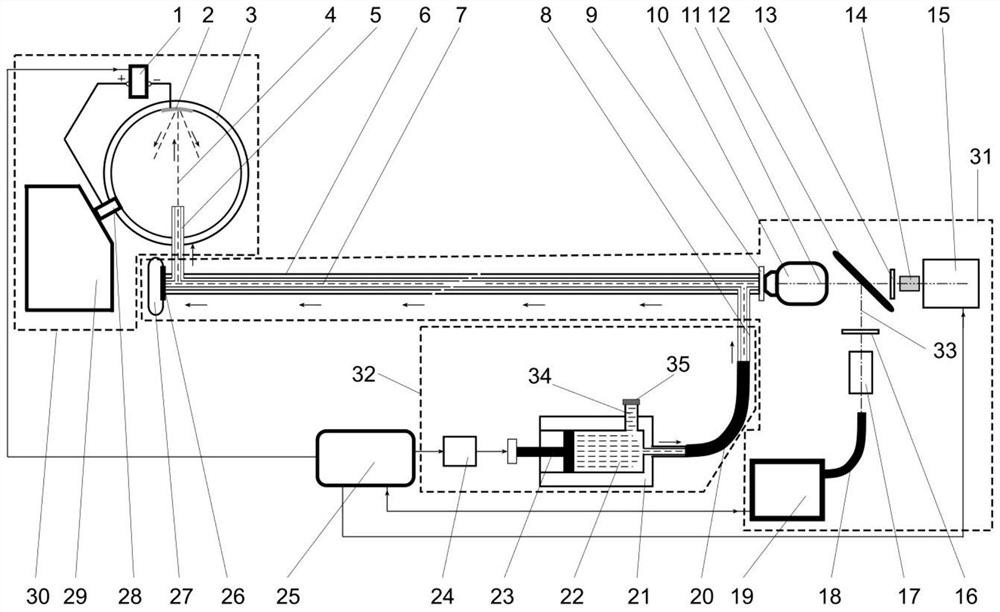Astronaut urine detection method based on liquid-core waveguide Raman spectroscopy
A Raman spectroscopy and liquid core waveguide technology, which is applied in the field of photoelectric detection, can solve the problems of weak signal and weak Raman signal, and achieve the effect of reliable component detection and environmental protection and hygiene.
- Summary
- Abstract
- Description
- Claims
- Application Information
AI Technical Summary
Problems solved by technology
Method used
Image
Examples
Embodiment Construction
[0027] The specific embodiment of the present invention is as figure 1 shown.
[0028] The astronaut urine detection method based on the liquid core waveguide Raman spectrum proposed by the present invention is realized on the astronaut urine detection system based on the liquid core waveguide Raman spectrum, and the system is mainly composed of a main controller 25, a collection subsystem 30. Composed of a spectrum subsystem 31 and an inlet subsystem 32;
[0029] Among them, the spectrum subsystem 31 is responsible for laser emission and Raman signal reception, which consists of a liquid core waveguide 6, a window glass 9, a microscope objective lens 10, a dichroic mirror 12, an interference filter 13, a beam expander 14, Raman laser 15, Rayleigh filter 16, fiber coupling mirror 17, receiving optical fiber 18, Raman spectrometer 19, total reflection mirror 26 and sealing 27; One end fits the total reflection mirror 26, and the total reflection mirror 26 is strengthened and ...
PUM
 Login to View More
Login to View More Abstract
Description
Claims
Application Information
 Login to View More
Login to View More - R&D
- Intellectual Property
- Life Sciences
- Materials
- Tech Scout
- Unparalleled Data Quality
- Higher Quality Content
- 60% Fewer Hallucinations
Browse by: Latest US Patents, China's latest patents, Technical Efficacy Thesaurus, Application Domain, Technology Topic, Popular Technical Reports.
© 2025 PatSnap. All rights reserved.Legal|Privacy policy|Modern Slavery Act Transparency Statement|Sitemap|About US| Contact US: help@patsnap.com

